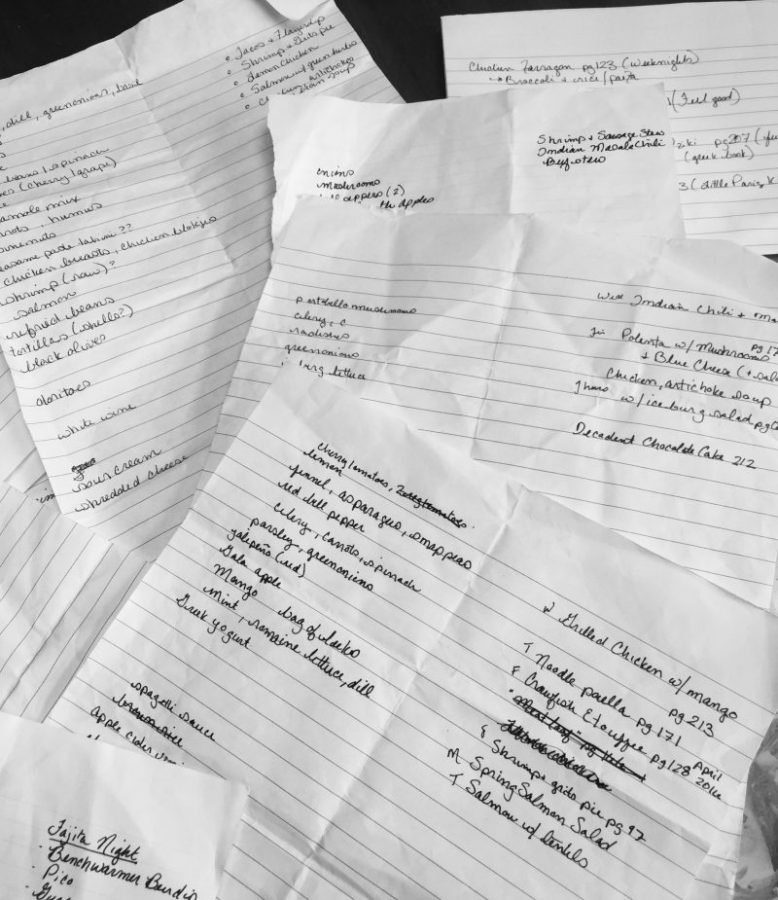Menu Planning

My cooking skills have evolved over time. Like with most things, it takes hours of practice – trial and error, and some helpful hints along the way. My mother sent me off to college with a Better Homes and Gardens cookbook and xerox copies of her favorite recipes. (I still have them, of course). Over the years, I cut recipes from a Southern Living or Better Homes and Gardens magazines. I’ve used a 3-ring binder with page inserts to keep these (mostly) organized. I expanded my cookbook collection and I researched recipes on-line. But I never really knew how to get all these organized recipes on my table. I’d grocery shop the way I’d always shopped – an empty cart with a few ideas in my head. I’d pick which vegetables looked good or what fruit I was craving. I know I needed bread, coffee, or toothpaste. I’d come home, open the fridge and wonder what I could make for dinner with the stuff I had on-hand.
It wasn’t until my husband and I discovered eMeals – an online Meal Planning service, that I understood the real process of meal planning. We stumbled upon it after taking a Dave Ramsey Financial Peace course (also, highly recommend). I was working full-time and found the pre-planned meals, with recipes, and grocery lists were very helpful in keeping us organized and on track. While the meals were for an entire week, my husband and I would pick five meals that interested us, shop for those ingredients, and eat leftovers or eat out on the nights a meal wasn’t planned for. I always knew what we were having that week and had the ingredients in the fridge. The recipes were so easy, even my husband could make them. It was fun, healthy, and helpful.
After we moved to the Netherlands, I continued the process on my own, going through my recipes and writing my grocery lists every few days. The week-long grocery list wasn’t possible, since European fruits, vegetables, and bread only last a few days without the preservatives infused into American products. I continue this process today.
- I hunt through my recipes and cookbooks. Sometimes I ask my husband if he has any requests, but typically I just go with what I feel like and the season.
- I write the name of the recipe in the top right corner with the book and page number it comes from (or reference my notebook or magazine).
- I sometimes flesh out each meal, if needed, with a specific side dish or even a non-specific (‘salad, green veggie, french bread, etc.)
- After looking at the ingredients I write them down on the left side of the page. The big pearl of wisdom here is you write it in the order of the store. Group fruits and vegetables at the top, meats and cheeses in the middle, bullion and cans of tomatoes, etc. later. This makes shopping so much easier and efficient. Plus the chances of you missing something on your list are minimal.
- Review your recipe ‘staples’ the pastas, rice, couscous, and add these to the list. Also add your kitchen ‘staples’ milk, coffee, tea, and insert these into the line-up of the shopping list
- At the bottom of your page or off to the side, add your non-recipe ingredients you might need – paper towels, toothpaste, etc.
- Head to the store and shop away – don’t forget to bring your recyclable bags (especially in Europe – they’ll charge you for the plastic ones!)
-
-
-
-
/ 0 Comments